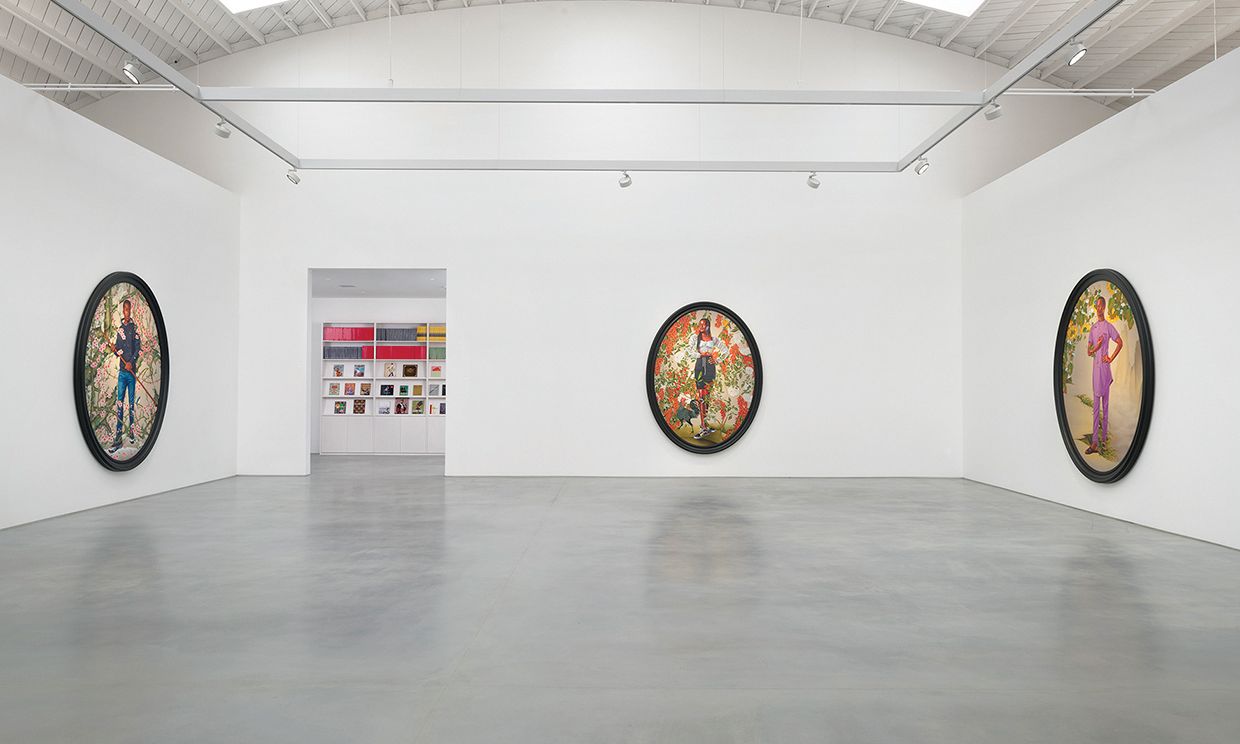Roberts Projects opened in a former car showroom with a Kehinde Wiley exhibition Robert Wedemeyer
It hasn’t been easy for large auto dealers to survive as the industry shifts online, especially in cities like Los Angeles, where commercial real estate is pricey. But where car dealers are packing up shop, art dealers are moving in. Two of the most anticipated new gallery spaces here this season—maybe the busiest yet, thanks to another round of New Yorkers setting down roots on the West Coast—are transformations of historic automobile showrooms.
After 15 years in Culver City, Roberts Projects has taken over a 1948 warehouse near the Los Angeles County Museum of Art (Lacma) at 442 South La Brea Avenue, formerly known as the Max Barish Chrysler-Plymouth showroom. There, it has opened its largest and most flexible space yet: 10,000 sq. ft including galleries, offices and a study room.
Gallery co-founder Julie Roberts says they were looking not just for a bigger footprint but the ability to carve out different types of spaces. “Especially with Betye Saar, Kehinde Wiley and Jeffrey Gibson, we do more than exhibiting works: we publish catalogues, do commissions and work on special projects like catalogues raisonnés and archives,” she says. The space opened on 21 January with a solo exhibition of new paintings by Wiley, Colorful Realm (until 8 April).
A few miles away in West Hollywood, Hauser & Wirth is opening its second Los Angeles location in a triangular 1931 Spanish Colonial Revival building at 8980 Santa Monica Boulevard that was previously home to Heritage Classics, famous for sourcing rare Mercedes Gullwings and Roadsters. “What looks good in a car showroom looks good in an art gallery, too: the higher ceilings, the skylights, the wood truss,” says Hauser partner Stacen Berg.
Also at play, she says, was reaching clients “who live on the west side and don’t go downtown that often”, where the gallery’s first Los Angeles space is located. The West Hollywood gallery opened on 15 February with George Condo’s solo show, People are Strange (until 22 April).
Hauser & Wirth has had success with its adaptive re-use of a flour mill and bank building downtown, and other galleries also inhabit spaces rich in local history. Jeffrey Deitch’s newest space, previously home to LAXART, was a recording studio for talents like Billie Holiday and Elvis Presley, while UTA Fine Arts’ gallery used to be a diamond-tooling facility. Most recently Lisson, opening in April, has taken over a gay sex club that closed during the pandemic.
It is hard to say if the shift from auto to art dealerships is trend or coincidence. Both Roberts Projects and Hauser & Wirth sound proud of their turbo-charged histories, and subtle touches by their architects, Johnston Marklee and Selldorf Architects, respectively, reflect that. At Hauser & Wirth, expect to see an extra-wide, accordion-style door and big display windows. Roberts Projects has a new roll-up garage door in front and, near the storage at the rear, a richly patinaed bronze door salvaged from the original space. Johnston Marklee has also left traces in the concrete floors marking where hydraulic lifts were once embedded. This is another selling point: these gallery floors can support sculptures as heavy as trucks.

